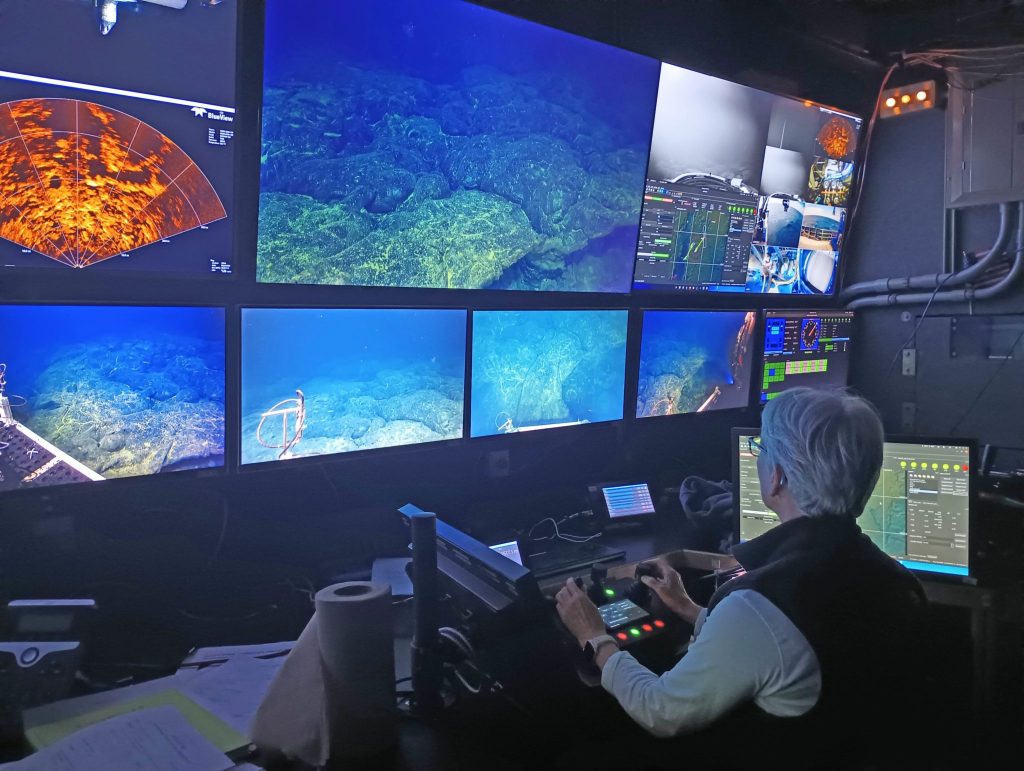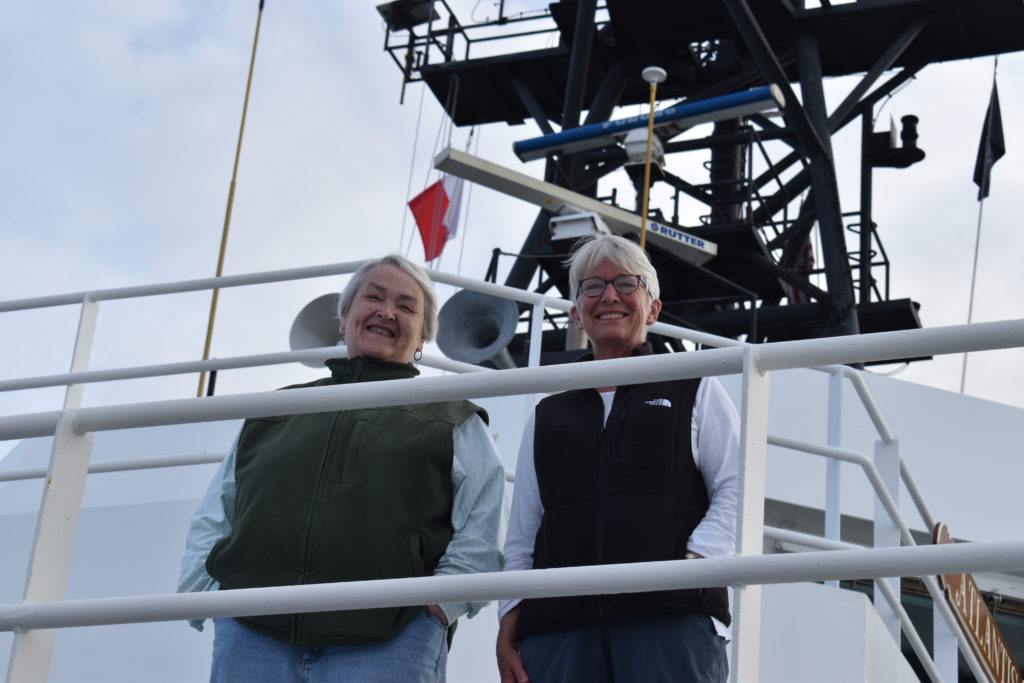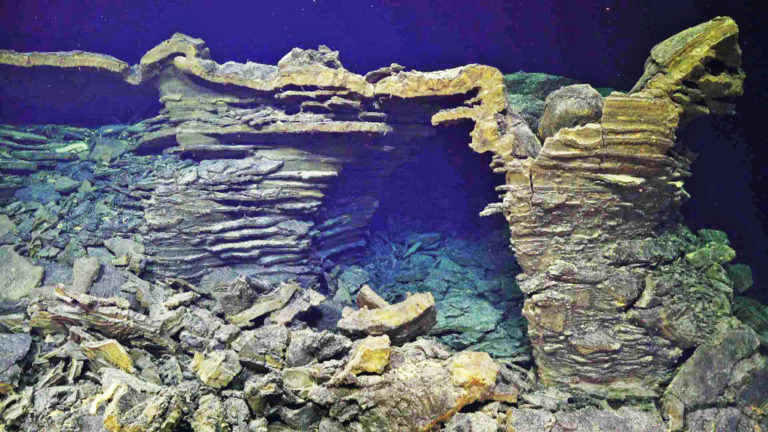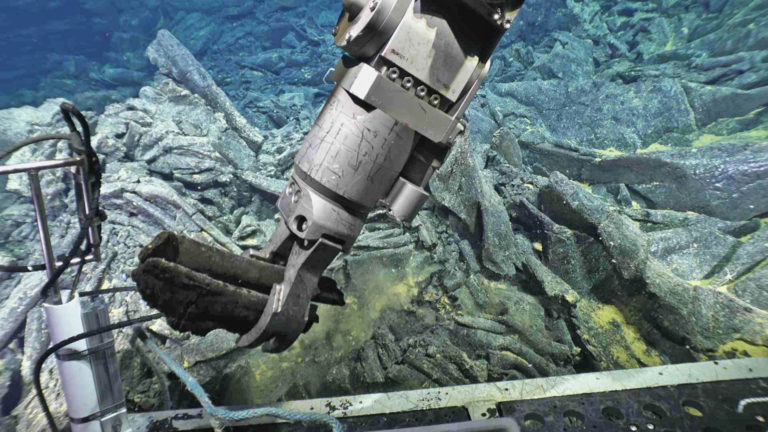Dr. Jackie Dixon, University of South Florida
My first cruise to the Juan de Fuca Ridge was in 1980. I was an undergraduate, but had taken some time off to serve as a marine navigator on the USGS vessel R/V S. P. Lee. This was before GPS and navigation, for science was done on a paper map using dead reckoning in between satellite fixes about every 4 hours. I spent roughly 6 months at sea over a 9 month stretch that year. The cruises ranged from mapping the Shatsky Rise on a transit from Ponape to Alaska, multi-channel seismic for oil and gas assessment around the Aleutians, mapping whale gouge on the seafloor off of Juneau, and finally dredging for basalt on the Juan de Fuca Ridge. Co-chief scientists were John Delaney (UW), Dave Clague (USGS), and Bill Normark (USGS). In 1980, we were blown out of the water with 30 ft seas and blue water over the bridge. But in spite of that, I believe we managed to dredge up the first sulfides on the Juan de Fuca Ridge on that cruise. I was hooked. After I returned to land, I walked into Dave Clague’s office and asked if I could work for him. The rest is history.
We had much better weather the next year and we successfully dredged the heck out of the southern Cleft segment. I continued to work with Dave for my master’s thesis, which resulted in two papers. One on the Sr-isotopic compositions of basalts along the entire Juan de Fuca Ridge. The second was a study of gabbroic xenoliths (crystal mush) from the Cleft segment. I continued working on volatiles in Juan de Fuca ridge basalts for my PhD at Caltech.
On this cruise, I’m here to gain insight into Jason operations in preparation for my cruise to the Mid-Atlantic Ridge. Hopefully that cruise will take place in summer 2027. Deb Kelley has graciously let me tag along. After too many years in administration, I’m in need of chief-scientist training, and Deb is the best mentor anyone could ask for. Little known fact, on separate occasions in our early seagoing days, Deb and I both duct-taped John Delaney into his cabin. Pranks were more a part of the experience back then and I guess great minds think alike.
Though the instrumentation has changed, the feeling of being at sea has not. Being part of a team working together on a common goal is a large part of why I chose to go into marine geology in the first place. The students and crew are great. A few students were a bit green for the first 24 hours, but they’ve all gotten into the rhythm. I’m amazed at the crafts they have brought onboard to fill in the down times. They are so talented! Sketching, bracelet weaving, photography, and of course Styrofoam cup and head decorating. Me, I’ve finally learned to tie a bowline hitch. I’ll quit while I’m ahead.
One thing that has changed is the ability to stay connected. Of course, when I was at sea early in my career there was no internet, but even on later cruises, when you left port, you were cut off from communicating with folks onshore unless it was an absolute emergency. I know I appreciate now having internet to be able to keep up with email and download papers, but it also seems to provide more opportunities for people to retreat into their own worlds.
But the best part, no TV news about the political chaos at home. Two peaceful weeks with calm seas, great people, and incredible food. Who can ask for more?

I’m in the Jason “hot seat” leading a survey of a lava channel formed during the 2011 eruption. Credit: J. Thirtyacre, University of Washington, V25.

Long time friends Deb and Jackie enjoy the departure on Leg 2. Credit: M.Elend, University of Washington, V25

Archway and collapsed basaltic rubble in a 2011 lava channel. Credit: UW/NSF-OOI; J2-1737, V25.

Collecting a glassy basalt sample from talus in a collapsed lava pit from the 2011 flow. Credit: UW/NSF-OOI/WHOI; V25.
Recent Updates